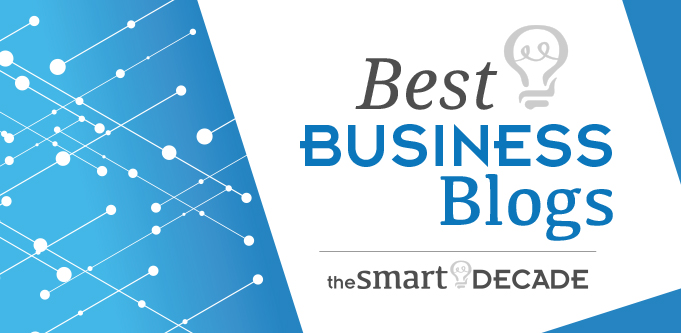DeepSeek Powers My Personal Search Engine
Welcome back Rankers! This week I dive into the latest disruptions in AI, how search is evolving, and why brand is more important than ever for businesses. You’ll discover insights into DeepSeek, the latest open-source AI model from China, and what its emergence means for search, privacy, and the cost of AI tools. I also explore the decline of Google’s traditional search traffic and what that means for digital marketers moving forward.
What I learned:
- DeepSeek and Open-Source AI – Understanding what makes DeepSeek a game-changer and how it compares to existing models like GPT-4o and Gemini.
- The Future of Search – How AI-driven tools like ChatGPT, Perplexity, and Grok are reshaping how people find information online.
- Google’s Declining Traffic – Why fewer people are clicking on search results and what that means for content creators and advertisers.
- The Power of Brand in SEO – Why building a strong brand presence is now the best strategy for staying visible in an AI-driven digital landscape.
Transcript
AI Disruption, Search Evolution, and the Power of Brand
Welcome Back, Rankers!
How are you going? What a year, and how it started is amazing. So much has happened already—Google is still losing more traffic.
I’ve done an interview with someone you may be familiar with, who I’ve mentioned often on this show over the last 20 years. That is a guy called David Meerman Scott. I’ve got that interview coming up—just need to edit it and get it out there. So, stay tuned for that.
But today, I wanted to talk about all the hoopla surrounding a new AI model from China—a large language model called DeepSeek.
The DeepSeek Debate: Privacy, Power, and Open Source
You may have seen DeepSeek in the news, with many warnings like, “Don’t use it, China’s going to get all your data.” Maybe. But for most people, OpenAI is already collecting your data unless you opt out—which you can’t do with the DeepSeek app.
The important thing that a lot of articles miss is that this model is essentially open source. That means you can download the software and run it on your own machine, or even someone else’s. If you do that, the data isn’t going anywhere—it stays on your machine.
I’ve seen some cybersecurity experts argue, “Oh yeah, but you don’t know what’s going on in the code.” But here’s the thing: It’s a large language model. It’s essentially a massive spreadsheet. It’s not sending your data to China if you’re running it locally. The app? That’s a different story—I don’t know how it works.
Why is this a big deal? Some large tech stocks have reportedly lost value due to DeepSeek’s release. But what does this mean for your business? Well, not a lot—except that AI is about to get much cheaper.
Why DeepSeek is a Game Changer
DeepSeek was built by a hedge fund in China, and reports suggest it’s nearly as good as leading models from OpenAI, Anthropic, and others. It might not be quite at their level, but for most businesses, it’s probably good enough.
In fact, I think it’s better than OpenAI’s GPT-4o and definitely better than Google’s Gemini. The real breakthrough here? DeepSeek was reportedly trained on just $5-6 million. Compare that to the tens of millions Anthropic spent or the billions OpenAI has invested. Even if those numbers are off, the fact remains: This model is open source.
That means anyone in the open-source community can download, fine-tune, and build on it. You don’t have to pay a subscription or get locked into a proprietary system. I even built a search engine using DeepSeek, similar to one I made a couple of years ago. I use Tivoli to collect data from the internet, and then DeepSeek distils it.
The Evolution of Search and AI’s Impact
One of the standout features of DeepSeek is its reasoning capability. This means it produces much better answers by taking the time to “think” about them. In a simple test, I asked, “Is TikTok banned in the US?” You could see how it reasoned through the answer, just like newer versions of OpenAI’s models.
It’s not as fast as Google because I’m running it on my MacBook, not on powerful cloud servers. But the key takeaway is that it’s completely private—no cookies, no ads, no data tracking. Just pure AI running on my local machine.
Why does this matter? Most AI models charge based on token usage—how much data you send and receive. That’s how they make money. But with open-source models, you don’t have to worry about that.
This shift is also affecting how people search. More and more, users are turning to AI tools like ChatGPT, SearchGPT, and Perplexity.ai instead of traditional search engines. People just aren’t clicking on those organic blue links like they used to. Instead, they get direct answers from AI-driven overviews.
The Decline of Google’s Traffic and What It Means for Businesses
Even when people use Google, they’re often relying on AI-generated overviews rather than clicking links. This is a massive problem for Google because informational searches traditionally drove traffic to blogs, publishing sites, Stack Overflow, and other knowledge hubs—sites that rely on Google Ads for revenue. With AI-generated answers, that traffic disappears.
So how do I search now? If I’m looking for brand information, I’ll type it directly into Google’s omnibox. But if I want the latest news or buzz, I use Grok on X (formerly Twitter). X is my go-to for real-time updates because it has instant access to everything posted.
Another recent AI model from China, Qwen 2.5 VL, is making waves. I can now ask AI-powered search tools about it, and they’ll pull the latest information from around the web. That’s the kind of real-time insight you don’t always get from traditional search engines.
The Future: Brand is Everything
With all these changes, what can businesses do? The days of trying to “game” search engines are over. The only real strategy now is to optimise your site for the best user experience—something I’ve been saying for years.
Interestingly, I’m seeing more SEOs talk about brand now. I first presented on the importance of brand in 2016, calling it the “ultimate SEO hack.” And now, even Google seems to agree.
The key takeaway: Build your brand. Grow your audience. Be the destination people think of first. That’s how you win in this new AI-driven search landscape.
You don’t need a massive budget—just be the go-to brand in your niche. Google did it. ChatGPT did it. Claude is still trying. X hasn’t quite nailed it yet with Grok. But if you can dominate your category, you’ll stay ahead.
Final Thoughts
Hopefully, this has been helpful. If you have any questions about AI and how to leverage it in your business, reach out. We’re constantly developing tools that help both our business and our clients, and we’d love to share our insights with you. You can reach me at [email protected]
Thanks for watching. Don’t forget to like, share, and subscribe. See you next week!
And don’t forget! We’re excited to remind you of our two groundbreaking reports that will catapult your business into the AI-driven future: The SAMScrum Report—a comprehensive analysis that will provide actionable insights to optimise your website for the AI era, and the Brand Intelligence Report – that reveals brand sentiment, competitive positioning, and product associations in the AI realm.
The SAMScrum Report: Your Website’s Secret Weapon
- Analyses your entire online presence: SEO, Google Ads, UX/UI
- Identifies revenue-killing issues in your digital strategy
- Implements changes that have DOUBLED revenue for our clients in months
The Brand Intelligence Report: Your AI Visibility Booster
- Examines your brand through the lens of leading AI models (Claude, ChatGPT, Google Gemini)
- Reveals brand sentiment, competitive positioning, and product associations in the AI realm
- Uncovers hidden opportunities to dominate your market in the age of AI
These aren’t just reports. They’re your battle plan for the AI revolution. (And you get a FREE Brand Intelligence Report with every SAMScrum purchase!)
Check out the reports here https://research.stewartmedia.com.au/

Jim’s been here for a while, you know who he is.


